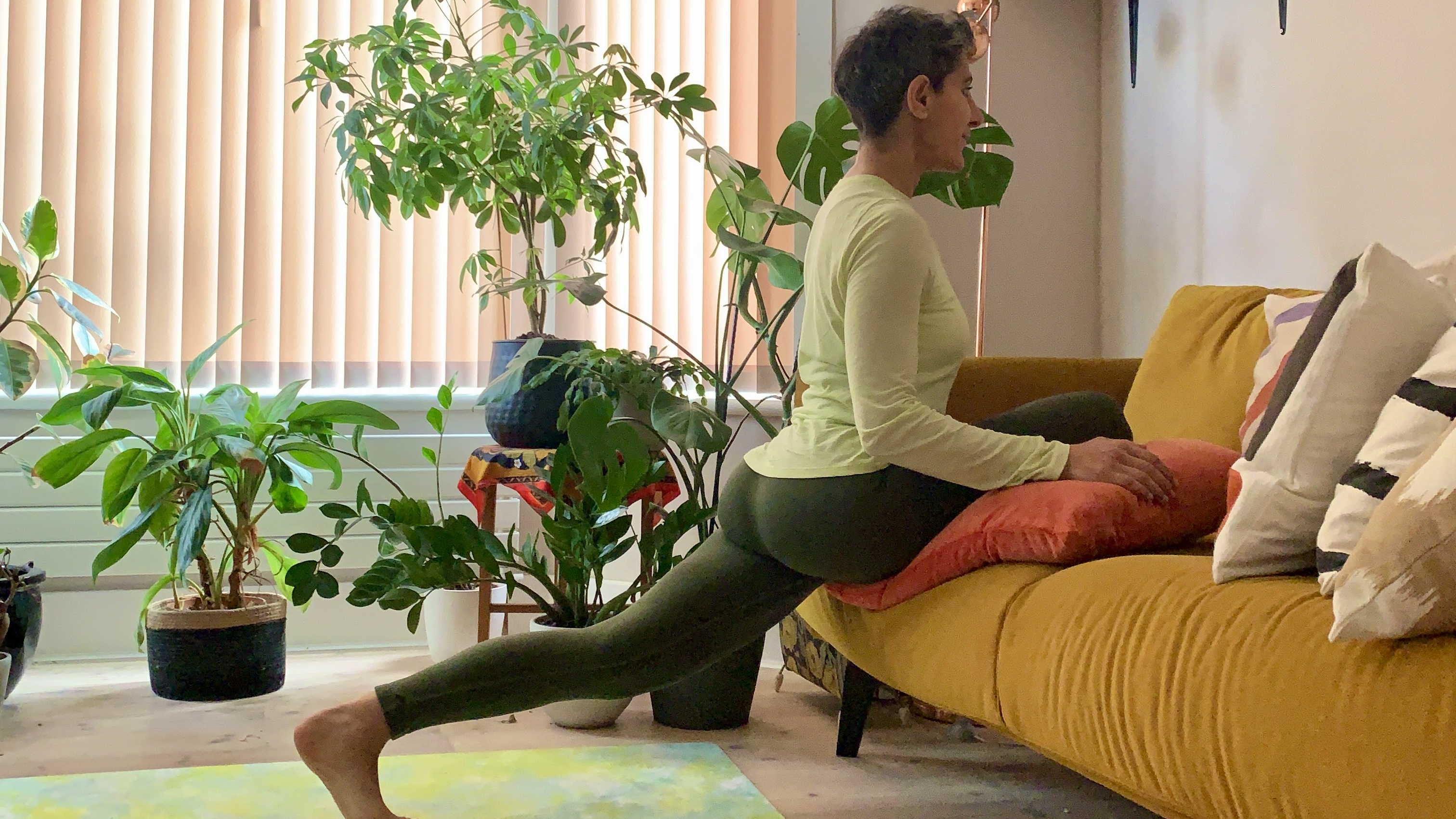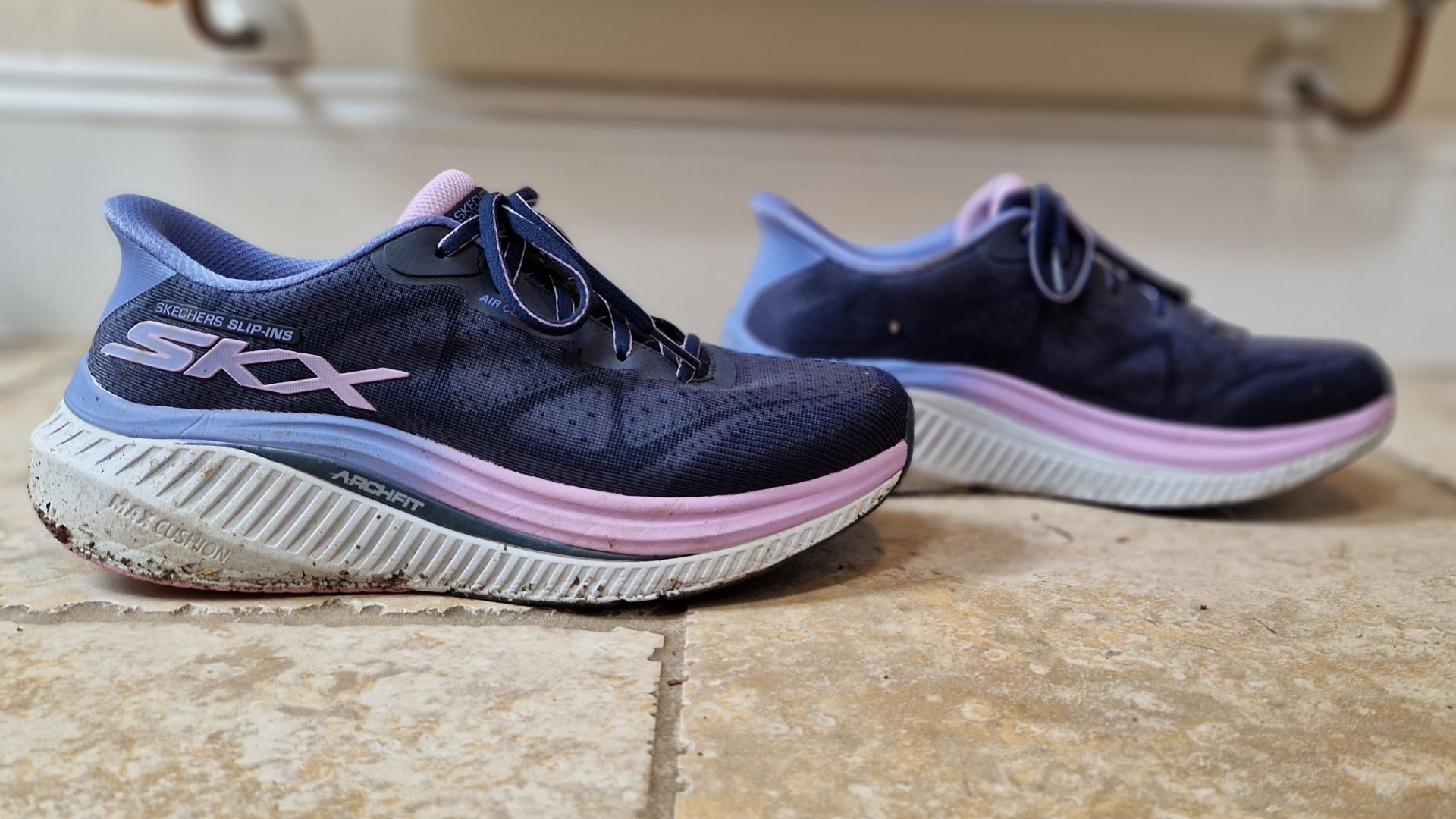I'm a yoga teacher and this stretch helps me maintain lower back mobility while recovering from sciatica
I modified the stretch and it made it so much more comfortable

I’ve recently been focusing on back mobility work to help me recover from chronic sciatica. My go-to move each morning is standing downward-facing dog to ease overnight tightness in my hips and buttocks. Throughout the day, I also incorporate pigeon pose but with a slight modification.
Ardha kapotasana translates from Sanskrit as half-pigeon pose though in English it’s often simply called pigeon pose. It's excellent at releasing tension in the hips and glutes (muscles in the buttocks), which helps alleviate pressure in my lower back. However, it can be uncomfortable if you have limited mobility in your lower body or if you’re recovering from injury.
This pose also stretches the often-overlooked psoas muscle, which runs from the lower spine, through the hips and attaches to the upper thigh (femur). The psoas deserves attention for its crucial role in stabilizing the spine, flexing the hip (lifting the thigh toward the body) and supporting posture in everyday movements like walking, running and bending.
In the traditional half-pigeon pose, your knee, foot and shin are positioned in front of and parallel to your hips. But this can be challenging, especially if you have tight hips. I made a simple modification inspired by Low Back Ability’s adaptation, which allows you to enjoy the full benefits of a floor-based pigeon pose without any strain.
How to modify pigeon pose
A post shared by Yanar Mind & Movement (@yanarfitness)
A photo posted by on
The standard half-pigeon pose requires no equipment but you’ll need a raised surface like a workout bench, chair or couch for this modified version. A cushion can also add extra comfort and height to your bent knee.
- Place one leg on the raised surface with your knee bent and your shin and foot resting on the surface in front of your hips, similar to the traditional half-pigeon position.
- Position your shin at the most comfortable angle
- Keep your back leg extended straight behind you on the floor with hips square and your torso upright.
- Turn toward your bent knee to feel further into the stretch.
This adjustment makes the pose more accessible and reduces pressure on your lower back, while still offering the same benefits of releasing tension and improving flexibility.
Want more flexibility-boosting moves? Try these beginner yoga stretches, which can improve everything from spinal mobility to hip stiffness.
Get the Fit&Well Newsletter
Start your week with achievable workout ideas, health tips and wellbeing advice in your inbox.
Yanar Alkayat is a health and fitness journalist, yoga therapist and certified personal trainer at Yanar Mind & Movement. Her experience includes 15 years as a writer and editor for national titles such as Runner’s World, Women’s Health and Men’s Health.
-
 I have bunions, but I can't feel them with these affordable Skechers walking shoes—now 22% off at Zappos
I have bunions, but I can't feel them with these affordable Skechers walking shoes—now 22% off at ZapposDeal A generous toe box makes the Skechers Max Cushioning Arch Fit Areena perfect for wide feet
By Lou Mudge
-
 Can't do a sit-up? A trainer says you should do these chair-based core exercises instead
Can't do a sit-up? A trainer says you should do these chair-based core exercises insteadNo sit-ups or planks
By Jennifer Rizzuto